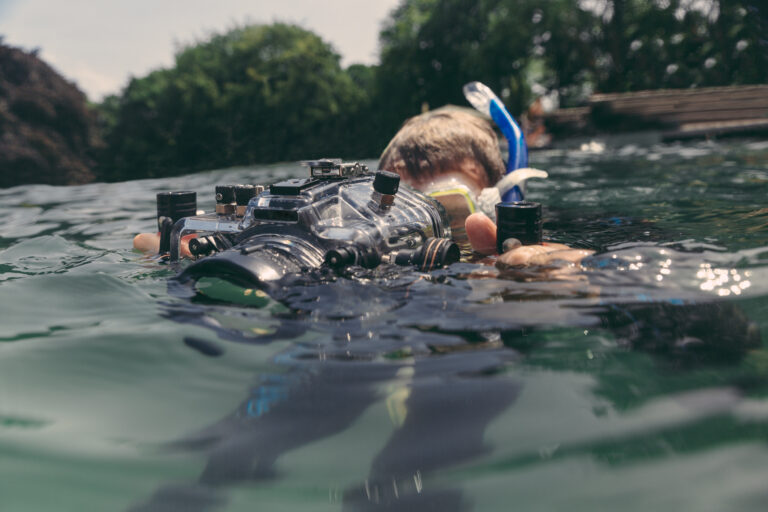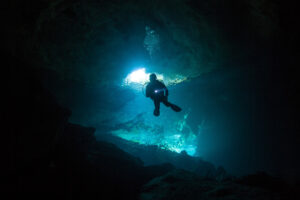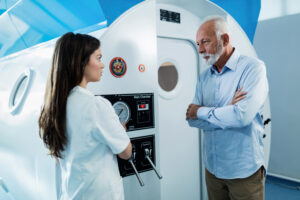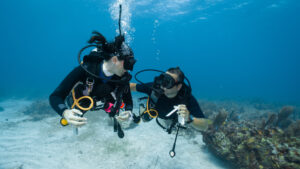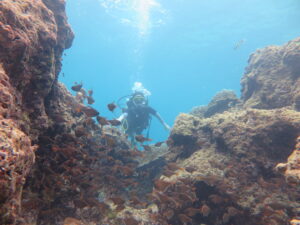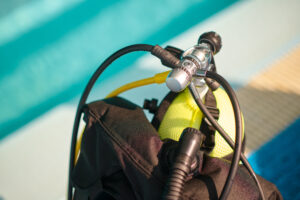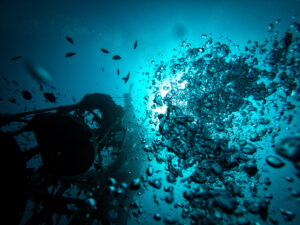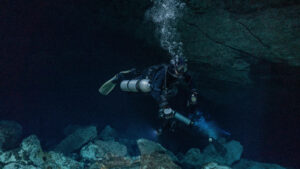What is Activated Carbon in Scuba Diving?
Activated carbon, also known as activated charcoal, is a form of carbon processed to have small, low-volume pores that increase the surface area available for adsorption or chemical reactions. Primarily known for its ability to filter and purify, activated carbon plays a crucial role in various industrial applications, from water treatment to air purification. In the context of scuba diving, this material is instrumental in ensuring that divers breathe clean, uncontaminated air. Its ability to adsorb toxic gases and impurities makes it an essential component in scuba tanks and rebreather systems.
Historical Development
The use of activated carbon dates back to ancient times, with records indicating its use in purifying drinking water and in medicinal purposes to absorb odors and gases. Its modern industrial application began in the 20th century when it was used in gas masks during World War I. Over the years, its usage expanded across various fields, including the military, medical, and water purification industries. As scuba diving evolved from a primarily military and exploration activity to a popular recreational activity, the application of activated carbon became increasingly significant. It was found to be highly effective in purifying the air supply for divers, crucial for safe and extended underwater excursions.
Production and Properties
Activated carbon is produced from carbonaceous sources like wood, coconut shells, coal, and peat. The activation process involves treating the raw material at high temperatures in the presence of an oxidizing agent, which erodes the internal structures of the carbon source, increasing its adsorptive surface area. This process creates a network of tiny pores that can capture, or adsorb, organic molecules and other pollutants in gases or liquids.
In scuba diving, two primary types of activated carbon are used: granular activated carbon (GAC) and powdered activated carbon (PAC). Each type has properties suited for different applications within the diving gear, especially regarding the purification systems of breathing apparatus. Granular activated carbon, with its larger particles, is commonly used in canisters for rebreather systems where ease of air flow is critical, while powdered forms are often employed in more compact systems.
Role of Activated Carbon in Scuba Diving
Activated carbon is pivotal in several critical applications within scuba diving equipment, primarily focusing on the diver’s air supply. Here are some of the key uses:
- Air Purification in Scuba Tanks: Before compressed air is filled into scuba tanks, it must be purified to remove contaminants like volatile organic compounds, hydrocarbons, and odors. Activated carbon filters are used at this stage to ensure that the air divers breathe is clean and safe.
- Removal of Contaminants from Breathing Air: While underwater, divers rely entirely on the air supply carried in their tanks. Activated carbon helps to continuously purify this air by removing any residual contaminants that might enter the system, including from the divers’ exhaled CO2, which can be filtered through scrubbers in rebreather systems.
- Use in Rebreather Systems to Scrub CO2: Rebreather systems recycle the air a diver breathes by scrubbing out carbon dioxide and adding oxygen. Activated carbon is used alongside other materials like soda lime to adsorb CO2 from the exhaled breath, allowing the oxygen to be reused. This process is crucial for long-duration dives and helps in minimizing gas waste.
Benefits of Activated Carbon in Scuba Diving
The incorporation of activated carbon into scuba diving gear brings numerous benefits. Foremost is the safety it provides by ensuring the air quality is maintained at safe breathing levels, critical in a sport where the inhalation medium is limited to what’s carried by the diver. Additionally, the use of activated carbon extends the lifespan of other equipment components, such as CO2 scrubbers and oxygen sensors, by protecting them from contamination. This not only enhances the reliability of the diving gear but also improves the comfort and confidence of the diver by reducing potential exposure to harmful chemicals.
Challenges and Considerations
While activated carbon is invaluable in scuba diving, it also presents challenges. One limitation is its inability to adsorb certain types of gases, like helium, which are sometimes used in diving gas mixes. Also, the efficiency of activated carbon can decrease over time as the pores become filled with adsorbed materials, necessitating regular maintenance and replacement to ensure effectiveness. Environmental concerns also arise regarding the production and disposal of used activated carbon, prompting a need for sustainable practices and materials.
The importance of activated carbon in enhancing the safety and efficiency of scuba diving cannot be overstated. As technology advances, the applications and innovations in activated carbon continue to evolve, promising even greater contributions to diving safety and environmental sustainability.
Technological Advancements
The field of activated carbon technology has witnessed significant innovations that have expanded its utility in scuba diving. These advancements are not only enhancing the efficacy of existing applications but are also paving the way for new uses in underwater exploration. For example, improvements in the microporosity of activated carbon materials have led to more efficient CO2 scrubbers that are capable of supporting longer and deeper dives with rebreather systems. Additionally, the integration of activated carbon with other filtration technologies, such as molecular sieves and advanced membrane systems, has improved the overall quality of breathable air in closed-circuit systems.
One of the more recent trends is the development of specialized activated carbons tailored for specific contaminants. These are designed to target the unique chemical profiles encountered in various diving environments, such as oil-rich or biologically active waters, where standard activated carbons might not be as effective. Furthermore, research into regenerative technologies, where activated carbon can be “recharged” on-site or on a vessel, reduces the need for frequent replacements and addresses some of the environmental concerns associated with its disposal.
Case Studies
Real-world applications and documented case studies provide tangible insights into the effectiveness and essential nature of activated carbon in scuba diving scenarios. One notable instance occurred during a scientific expedition in the Coral Sea, where divers using rebreather systems were able to conduct multiple dives to depths beyond 100 meters. The rebreathers, equipped with advanced activated carbon scrubbers, successfully removed CO2 and other potential contaminants from the closed-loop system, allowing the divers to explore underwater caves with significantly reduced risk of hypoxia or hypercapnia.
Another case study involves a dive operation near a busy port, where the surrounding water contained higher levels of hydrocarbons due to nearby shipping activities. Divers reported issues with odors and minor irritations in their breathing apparatus when using standard air filtration systems. After switching to a more robust system featuring enhanced activated carbon, divers experienced improved air quality with no further reports of irritation or discomfort, showcasing the adaptability and crucial role of activated carbon in maintaining diver safety in polluted environments.
Safety and Regulation
Given the critical role of activated carbon in ensuring diver safety, several standards and guidelines govern its use in scuba equipment. Organizations such as the American National Standards Institute (ANSI) and the European Norms (EN) have set forth specifications that determine the quality and performance of activated carbon used in breathing apparatus. These standards ensure that the carbon used is capable of effectively removing a broad spectrum of contaminants while withstanding the pressures and environmental conditions encountered during dives.
Moreover, diving equipment manufacturers and maintenance technicians are required to follow strict guidelines for replacing and disposing of activated carbon. These guidelines help maintain the performance of the filtration systems and ensure that safety is not compromised due to saturated or ineffective carbon filters. Regulatory bodies in various countries also mandate regular inspection and certification of scuba equipment, particularly those involving life-support systems, to ensure adherence to safety standards.
Environmental Impact
The production, usage, and disposal of activated carbon have environmental implications that must be considered. The carbon is often sourced from natural materials such as coconut shells or wood, which raises concerns about resource sustainability and environmental degradation. Furthermore, the used activated carbon can contain adsorbed hazardous materials, complicating disposal and potentially impacting environmental health if not handled correctly.
Efforts are underway to address these concerns, with research focused on developing more sustainable forms of activated carbon and methods for safely regenerating used carbon. These initiatives aim to reduce the ecological footprint of activated carbon production and usage while maintaining its benefits for scuba diving and other applications.
Key Takeaways
Activated carbon remains a cornerstone technology in the realm of scuba diving, vital for the purification of breathing gases and the safety of divers. Its ability to adsorb harmful contaminants from divers’ breathing air is unparalleled, making it an indispensable component of modern scuba gear, particularly in closed-circuit rebreather systems. As technology progresses, the potential for new applications and improved performance of activated carbon continues to grow, promising enhanced safety and new possibilities for underwater exploration.
The ongoing advancements in the production and regeneration of activated carbon, coupled with stringent safety standards and regulations, ensure that it will continue to play a vital role in the diving industry. By addressing both the technical and environmental challenges associated with its use, the future of activated carbon in scuba diving looks both promising and essential for the continued evolution of the sport.

